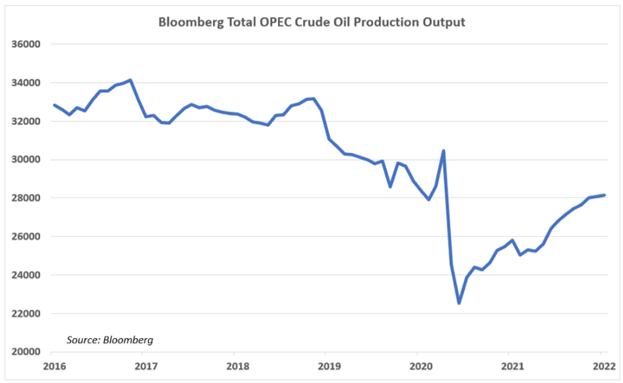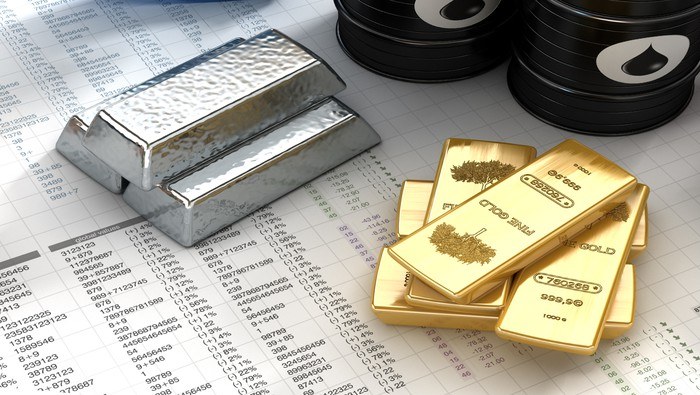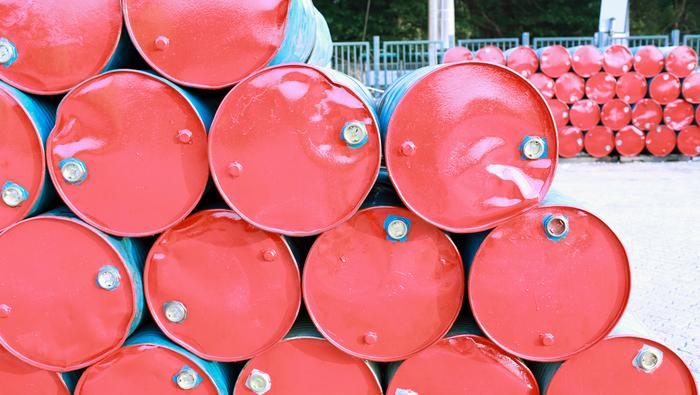CRUDE OIL, OPEC MEETING, IRAN NUCLEAR DEAL, RUSSIA, UKRAINE - TALKING POINTS
- Crude oil prices eyeing the upcoming OPEC meeting in March
- Iran nuclear deal negotiations: a cause for cautious optimism?
- Russia-Ukraine tensions could dampen or exacerbate volatility



CRUDE OIL PRICE OUTLOOK
Crude oil prices are up almost 20% year-to-date. The Brent benchmark is hovering at over $90 a barrel, with expectations that it could hit as high as $120 in 2022. Supply disruptions from COVID-19, resurgent demand, and geopolitical developments in Europe and Iran are stoking volatility. The bullish case seems strong, but which of these stories will have the most impact?
OPEC MEETING IN MARCH: WHAT TO EXPECT
The Organization of Petroleum Exporting Countries (OPEC) and its extended cartel associates (collectively known as OPEC+) will be convening on March 2. At the prior ministerial meeting in early February, members agreed to a slight increase in production for the following month. The agreement entailed an additional 400,000 barrels per day (bpd).

However, supply chain gridlocks and underinvestment continue to be obstacles that OPEC+ members face ubiquitously. The cartel’s Secretary General Mohammad Barkindo emphasized these risks to reporters recently, adding geopolitics as a key driver in moving oil prices higher. Other OPEC members also see domestic unrest hindering production,such as Libya.
IRAN NUCLEAR DEAL: PROGRESS OR REGRESS?
Washington is dealing with the trilateral convergence of major geopolitical narratives: tension with Russia over Ukraine, stress with China over Taiwan, and the Iran nuclear deal. The three are connected to the extent that a soft approach to one issue may embolden the counterparties of the others.
The Iran nuclear deal is a critical foreign policy endeavor that the Biden administration is keen to achievefrom a domestic and international perspective. Failing to revive the deal after Donald Trump shredded it could hurt the President’s credibility and popularity. This may be used as ammunition by the rival Republicans in the upcoming elections.
From an international point of view, coming up short here could stoke the narrative that the US is an unreliable partner who’s commitment to accords may radically change with a new administration. Allies and competitors alike may then start to look for more predictable counterparties to do business with – like China, for example – despite a lack of democratic norms that many Western states afford.
Having said that, Russia and Iran’s Foreign Ministers have noted progress has been made, with the latter emphasizing that Tehran is “in a hurry” to strike a deal. Senior officials are quoted to have said that an accord could be reached as soon as early March. That may overlap closely with anything novel out of OPEC+, boosting crude oil volatility.
The question then is: which narrative – the OPEC meeting or a revised nuclear accord – will have the most impact? The answer is that it probably depends on the macro-fundamental context. COVID-19, resurgent demand, and bearish political developments may weigh on crude oil prices, but the influence of broader forces may outweigh a brief setback in supply relief.
Trading Strategies and Risk Management
Global Macro
Recommended by Dimitri Zabelin
RUSSIA-UKRAINE UPDATE
Tension over the Ukraine between Russia and the United States has put markets on edge and cast a shadow over equity markets. Dampened risk appetite appears to not have affected typically cycle-sensitive crude oil, however. Rather, the prospect of US-led sanctions against the Eastern European giant have pushed prices higher.
Russian oil is not delivered by land – unlike its gas to Europe – but by sea. It may therefore be less vulnerable to disruptive spillover (as it were) from a military conflict. Having said that, initial reports of a Russian pullback suggest tensions may be easing. Nevertheless, Ukrainian officials and their Western allies remain on edge.
Were the situation to deteriorate, and the early signs of a detente proven to be false, the bullish case for crude would be reinforced. Furthermore, according to the Internal Energy Agency, oil consumption is estimated to return to pre-pandemic levels at approximately 100m bpd.
Sanctions on top of resurgent demand would only further stoke the flames of inflation. From the perspective of monetary policy, this could embolden hawks like St. Louis Fed President James Bullard and strengthen the case for aggressive tightening. While energy is known to be notoriously fickle, a sharp rise could add to the pressure that central banks all over the world are facing.
As noted in my guide on trading geopolitical risks, international relations – particularly between the so-called “Great Powers” – have multi-iterated consequences across asset classes. Traders may therefore be more hesitant to engage in bold trades if the risk premium for every dollar invested continues to shrink.
For crude oil, this “constellation of narratives” (to borrow from Robert Shiller) suggests higher demand in an environment of politically induced disruption. This argues that the outlook for Brent is bullish. While a deal with Iran could cap gains to some extent, the force of the other contributing influences seems likely to emerge dominant, overriding the impact of a would-be accord with Tehran.
CRUDE OIL PRICE TECHNICAL OUTLOOK
Crude oil prices have been rising on a steady uptrend (gold channel) since December 2021, marking a whopping 34% increasefrom $69.30 to now over $90. However, negative RSI divergence suggests momentum is slightly slowing as the indicator continues to hover in so-called “overbought territory” (that is, above 70).



Crude Oil Prices - Daily Chart

Chart created using TradingView
While this is no guarantee of a pullback, it is not inconceivable for prices to fall as a result of traders locking in gains as risk premiums become thinner. If a break of the uptrend is confirmed with a daily close below it, bearish momentum may briefly spike. A potential area of support that may be tested in this scenario is the channel between $89.97-$87.86.
While such a move might help harden sellers’ resolve, the fundamental circumstances suggest such an outturn unlikely. What is more probable is a brief period of indecision in the channel area following a break from the uptrend. Exhausted sellers may then be overwhelmed by enthusiastic buyers, helping prices to recover.
Written by Dimitri Zabelin for DailyFX





